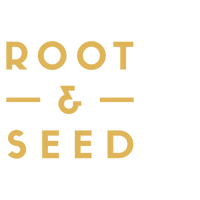Shared by: Misshka Guptaa, Root & Seed Intern
Culture means something different to everybody. For some, it's the heritage and religion they grew up in and for others, it's the people, places, beliefs and traditions they find along the way that become their culture. Queer culture is such for me. Being a person who identifies as South Asian and Queer, jostling between these identities has been an experience of growth and learning, sharing and empathy. For the LGBTQ+ community, queer culture has created the space for non binary beliefs, fluid self expressions and traditions that break the norm. It gets me thinking how culture is so uniquely abstract. Celebration of all cultures is a celebration of varied faith and lifestyles.
I am Misshka Guptaa, (yes spelt correctly….a story for another day :)), I’m a summer intern with Root & Seed and this is my story about uncovering the “root” and “seed” of Pride, fittingly written during a month that celebrates what it means to be part of this glorious community.
A Little History
About 50 years ago, a riot led to the worldwide recognition of what is known as present day Pride. Pride is both a movement for LGBTQ+ rights and a celebration of Queer culture. The late 1900s introduced the world to what Queer culture truly is, with it being expressed in art, music, dance, fashion and cinematic representation, in a way, establishing the Root of a growing community.
Importance of Community
Modern day pride celebrations are an ode to those who came before us, those who fought for the community and those who shared their stories. Pride has come a long way, giving the community spaces to celebrate and educate. Queer culture is liberating, freeing and powerful. History records people, irrespective of gender or race, coming together to break barriers and fight for change. To me, that is what Pride is all about.
The Matriarchs & Patriarchs
In the 70s, Black and Latinx gay and trans individuals started the subculture of “balls” as a way to self express and find community. It is at these balls where the art of Drag was fully celebrated with drag queens strutting and posing in categories at pageants, representing their most authentic selves. The balls popularized “voguing”, a dance style with sharp hand movements replicating a catwalk and model pose. The balls were all about glamour, realness, face, body and gowns but also, queer existence, expression and representation.
The ballroom scene gave rise to houses led by “mothers” and “fathers” who guided young queer individuals through the balls. These houses soon turned into found families and a safe space for queer people who didn’t find acceptance with their real families. Every house had its own traditions, its own way of presenting at the balls and often, a signature look. To this day, popular houses like House of Xtravaganza and House of Mugler walk balls and have become a space for young queer people to participate in queer culture.
Writing the Future Today
For a young queer person like me, it is nothing short of emotional and exciting to see this beautiful culture being represented in art and through pride celebrations. It makes me think how significant LGBTQ+ history and stories are in planting a Seed for the future of the queer community and its allies to take this statement forward.









